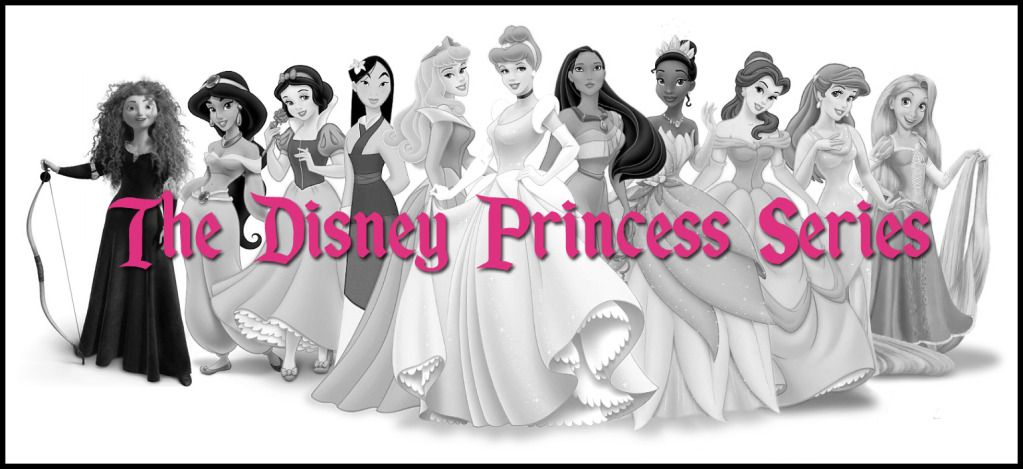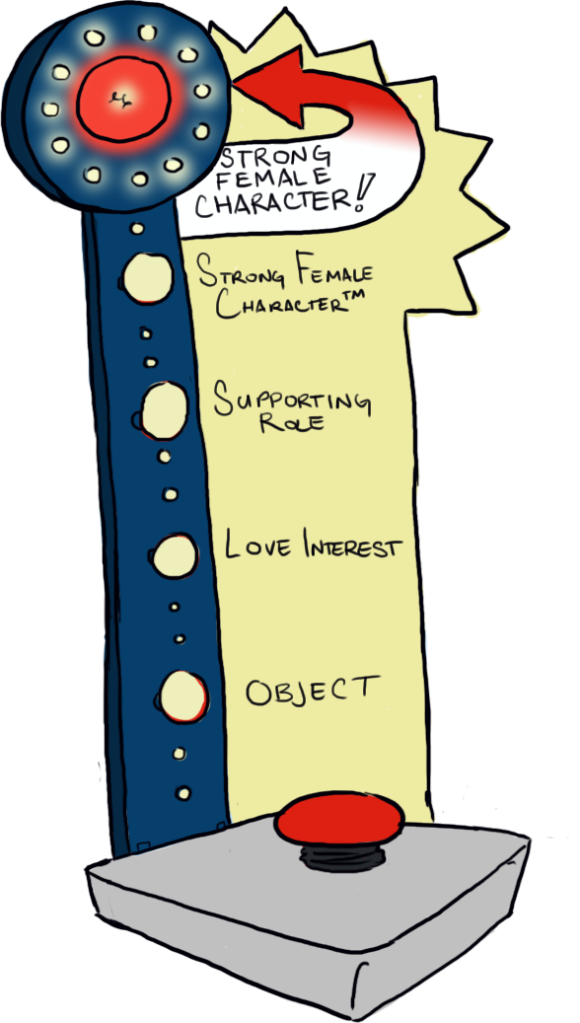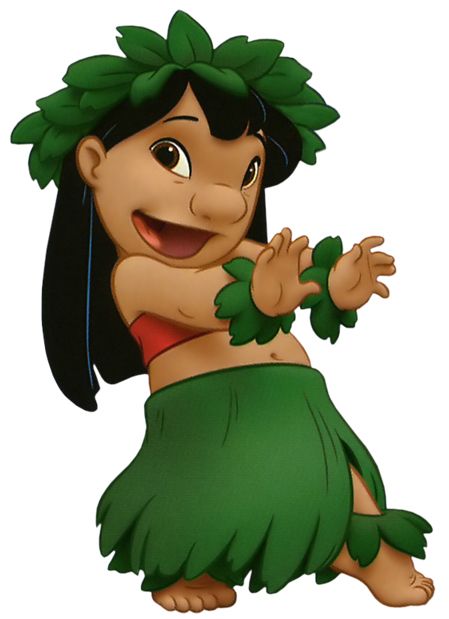We interrupt your regularly scheduled princess programming with an urgent news bulletin.
(We included Meg just for the hell of it.)
Megara
In Greek mythology, Megara was the first of Heracles’ four wives: she was given to him by her father, King Creon of Thebes, after Heracles defeated the Minyans at Orochomenos. Heracles brought Megara to his home in Thebes, and she bore him a son and a daughter. Unfortunately, Heracles was driven mad by Hera (who resented him because he was the offspring of an affair Zeus had with the mortal Alcmene, and living proof of Zeus’ infidelity) and killed his children. Some sources claim that he also killed Megara, while others state that she was given to Iolaus (Heracles’ nephew) after Heracles left Thebes, never to return. Not exactly Disney material, there.
But then again, the Megara of Disney’s Hercules isn’t standard Disney material either. She is a dame straight out of a classic film noir, a self-proclaimed loner, and an unabashedly skeptical and sarcastic woman. When we first meet Megara, she’s in a typical Damsel in Distress situation: the centaur river guardian Nessus is manhandling her. Hercules tries to step in and save her; however, she refuses his help, saying, “I’m a damsel, I’m in distress, I can handle this. Have a nice day.” It is only after Hercules leaves that we learn that she went looking for trouble, having been sent by Hades to convince the centaur to join his side in the coming war. We also learn that Megara is completely unimpressed with Hercules’ “big, innocent farm boy routine.” The Lois Lane to Hercules’ Superman, Megara only truly notices him when he saves Pain and Panic in the guise of cherubic children.
Still, she is reluctant to fulfill the narrative’s role for her, as she plays the double agent while resisting the pull to become a love interest. She is forced at every turn to play the femme fatale, deploying her feminine wiles at Hades’ command. The bulk of her courtship with Hercules is part of Hades’ plan to discover Hercules’ weaknesses, making Megara a pawn in a game played by men and gods. The only control she possesses at this point is control over her own feelings, and even they are rebelling. After a date not necessarily with the Devil, but certainly planned by him, Meg laments her situation, refusing to acknowledge the fact that she’s in love. She is manipulated by her feelings just as much as she is manipulated by her master.
And this is a dangerous and familiar situation for Meg. She’s stuck in this predicament because she sold her soul for a guy who immediately left her for another woman, proving that you have to be a mermaid for that kind of deal to work out. Indeed, the lesson this particular film appears to be trying to get across is that it’s fine to give up everything for a guy, but it has to be a guy worthy of such a sacrifice. Meg goes on to make a similarly substantial sacrifice for Hercules: she pushes him out of the path of a falling pillar while he’s weakened by his deal with Hades, sustaining fatal internal injuries in the process. In doing so, she restores his strength and allows him to go to the Underworld to confront Hades, where he risks his life to regain her soul. In risking his life for Megara, Hercules gains the Official Stamp of Heroic Approval from Zeus and is elevated to god status. He refuses immortality so he can be with Meg, whose mortality excludes her from Mount Olympus. There is a certain equality in their mutual heroic sacrifice, rendering Meg a kind of hero in her own right.
However, it's Hercules’ name on the tin, and Megara’s story revolves around a romantic relationship with him. Like Jasmine, she’s a Supporting Character, albeit a pretty cool one.
Verdict: Supporting Character
With the release of Atlantis: The Lost Empire, Disney introduced us to Kidagakash, a competent, capable princess by birth -- the first since Pocahontas, seven films and six years before. In addition to having the coolest name of any Disney character, she may have the most harrowing origin story. Her mother is literally pried from her hands while the apocalypse happens all around her; her mother seems to die as the city sinks.
They are not, however, the things her father would like her to do. He tells her that the invaders should be killed, and that a thousand years earlier, Kida herself would have been more than up to the task. During that millenium, it seems that Kida has been forced by the evidence of her people’s impending demise to experience tremendous character growth. Nevertheless, when Milo and Kida emerge from their subaquatic study date she doesn’t hesitate to take down three of the guards awaiting their arrival, thereby demonstrating that she is every bit the warrior she used to be. She and her father have different ideas about the way Atlantis should be run; whereas she understands that their way of life is dying, he argues that it is actually preserved and that all will become clear when she takes the throne. She learns the truth before she wears the crown, however, having been chosen by the Heart of Atlantis to act as a conduit in order to save her people. Basically, she has phenomenal, cosmic powers without the itty bitty living space. After saving Atlantis from a volcanic eruption, Kida becomes queen in her own right -- the only Disney princess to become an active monarch during the course of the film.
Kida is also the only Disney princess not to kiss her love interest: she and Milo are shown embracing once, holding hands once, and then rebuilding Atlantis together. The most outright romantic implication we get is that Milo marries Kida and becomes prince consort, having donned Atlantean clothing and tattoos. It’s downright refreshing.
While Kida is an excellent character in her own right, what makes the criminally underrated Atlantis: The Lost Empire stand out from the crowd is the sheer number of female characters. Not only are there women shown manning the controls of the submarine, there are four women in the principal cast. Joining Kida are three of the explorers, Mrs. Packard, Helga Sinclair, and Audrey Ramirez. Mrs. Packard is the radio operator, a woman who remains so cool in the face of danger that she offers advice on her friend’s marriage while a monstrous machine attacks the submarine in which she is travelling. Helga is introduced as a straight-up femme fatale, but is soon revealed to be the mission’s second in command. After she is betrayed by Rourke -- who, in another wonderful subversion of the formula, she is not dating -- she plays an integral role in saving Atlantis by shooting down Rourke’s escape balloon.
One of the film’s major achievements is its subtle reimagining of the hero’s best friend. Audrey fills the position of the protagonist’s closest friend, a role usually reserved for a white or black man, here played by a Puerto Rican woman. Despite being only a teenager, Audrey is the chief mechanic on the mission. When Milo asks how that came about, the following dialogue occurs: “I took this job when my dad retired. But, the funny thing was, he always wanted sons, right? One to run his machine shop, another to be middleweight boxing champion. But he got my sister and me, instead.” “So, what... what happened to your sister?” “She’s 24 and 0, with a shot at the title next month.” The real value of this exchange lies in the way it is delivered: as if it is no big deal. When the crew members turn their backs on him, she is the first to step forward to support him, despite the fact that a change of allegiance almost certainly means that she will never return to the surface in order to open the second garage that her pay was supposed to fund. This film is full of women being awesome in ways that the film doesn’t need to draw attention to, because it just expects it of them.
(Bonus points for not female but still awesome Dr. Joshua Strongbear Sweet, a biracial man (Native and African American) who is proud of his cultural heritage and wickedly quick with a bone saw. Extra points for Vinny Santorini, whose past as a flower arranger is in no way disparaged by the film, but is rather upheld as an admirable future plan should his taste for demolition run its course.)
Verdict: Actual strong female character
We are inundated with films about the profound connection between male children and their legendary or science fiction derived creatures: a boy and his dragon (How to Train Your Dragon), a boy and his robot (The Iron Giant), and a boy and his alien (E.T.), to name a few. Little girls find this kind of connection almost exclusively in girl and her horse movies, which offer significantly fewer opportunities for the protagonist’s story to have national, global, and even intergalactic significance. Lilo & Stitch represents a departure from this model.
With Lilo’s wisdom comes eccentricity. She makes voodoo dolls of her “friends” and shakes them in a pickle jar. When she crafted her ragdoll Scrump and accidentally made her head too big, Lilo decided that it was because Scrump had bug eggs laid in her head. When she meets Cobra Bubbles, her first question for him is if he’s ever killed anyone. She is a massive Elvis Presley fangirl. Later, when Stitch is trashing Lilo’s room, she clutches some of her finger paintings and proclaims that they were from her “blue period.” Her eccentricity also manifests itself as an incredible gift for finding the beauty in odd things. She cultivates a collection of photos of obese beachgoers, and when Nani examines them Lilo sighs, “Aren’t they beautiful?” Indeed, it’s this same gift that actually leads to her picking out Stitch at the animal shelter, even though no one is entirely sure what animal he is. When the rescue lady explains that Stitch had been hit by a truck and presumed dead, Lilo’s first reaction is to proclaim “I like him!” Talk about rose-coloured glasses.
Stitch is actually the greatest proof of Lilo’s strong character. She manages not only to tame a purely destructive force, but to make him a member of her family. Unlike earlier films, true love does not even factor into the equation, unless you count true familial love. It is reductive to make every film starring a female character focus around the family unit, but Lilo’s story, while certainly revolving around the domestic world, also revolves around whole other freaking worlds. That is something remarkable: that this little girl can do what the entire Galactic Federation cannot, and that she is important on such an epic scale.
Also, there is a chairwoman. It’s the little things.
Verdict: Actual strong female character
Conclusion
Despite the lower box office take, we would argue that this period produced some of Disney’s most daring and creative films as well as some of its most fascinating female characters. From the acerbic Meg, to the queenly Kida, to the bizarre Lilo, as well as all the women with whom they share the screen, this set of characters represents a welcome departure from the tried and true Disney Princess formula. Ironically, this change occurred just as the princess brand was being invented.
We now somewhat begrudgingly return you to your regular Princess-centric programming.






No comments:
Post a Comment